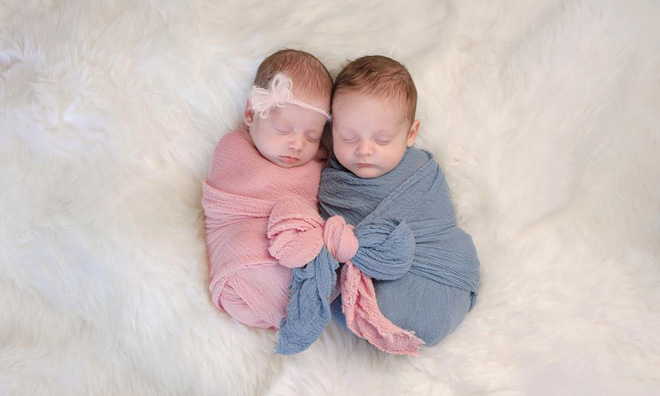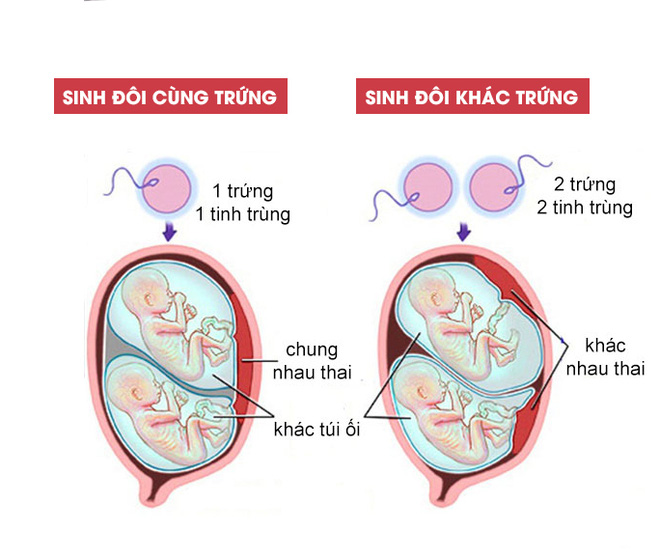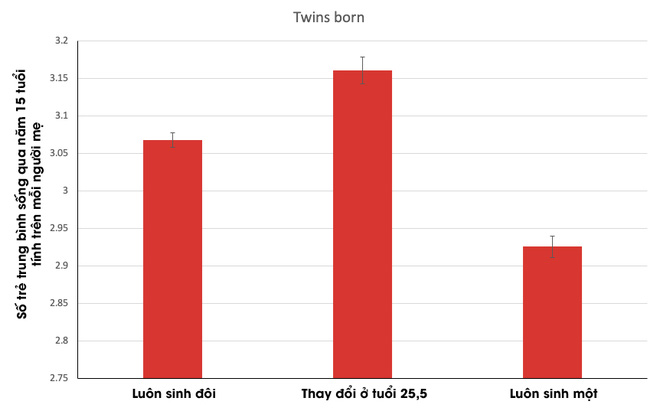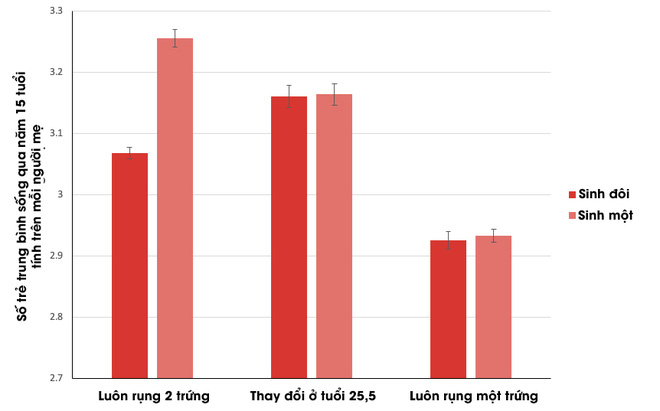Twins: An evolutionary mystery or just an accident?
When a pair of twins are born, we know that two children are not always the same, even, they may be different from the sex. Known as the fraternal twins, these twins pose a conundrum for biologists studying evolution.
Identical twins arise from a single fertilized egg, but accidentally splits in two. In contrast, fraternal twins arise when the mother releases two eggs at the same time, and both are fertilized.
While identical twins do not inherit, identical twins have. And both forms of twins seem to be against evolution, because they can increase the death rate of both mothers and babies.
So why are there still twins born? This is still an unsolved puzzle for more than half a century.
 Twins: An evolutionary mystery or just an accident? Picture 1
Twins: An evolutionary mystery or just an accident? Picture 1 Is twins an accident or natural selection?
Ever since the scientist Michael Bulmer published the book "The Biology of Human Twins" in 1970, he has been trying to explain the twin phenomenon of mothers. Accordingly, ever since we evolved into a great ape, we humans have been set to only give birth to one after each fertilization.
This is because twins increase the mortality rate of both babies and mothers. Natural selection only allows women to ovulate one egg per month, and eggs are fertilized by only one sperm to give birth to a child.
The phenomenon of an egg after fertilization into two embryos, giving birth to two identical babies has been proved to be an accident. That's because it's not inherited, girls with twins don't keep twins growing up sometimes. The twin in this case also does not change any other biological aspect of the human being.
 Twins: An evolutionary mystery or just an accident? Picture 2
Twins: An evolutionary mystery or just an accident? Picture 2 Curiously, however, the phenomenon of fraternal twins did not work according to that random principle. Girls who have twins are different, and when they grow up, they also have a large proportion of twins. These girls also drop two or more eggs a month just like their mothers.
This is not an accidental phenomenon. But if twins can be dangerous for both mother and child, why doesn't natural selection remove this phenomenon from human evolution?
Even statistics show that mothers with twins fraternal twin also have a greater chance of twins when over 30 years old. And they have on average more children than women who give birth to only one child at a time.
Natural selection favors women who shed more eggs
To explain this question, a team of scientists from the University of Western Australia, the London School of Tropical Medicine & Hygiene and Depauw University used data collected from in real-life populations, to design a model of survival for twins and single mothers of their different ages.
In fact, scientists say other female twins ovulate more eggs as they get older. That means during the puberty years up to the age of 25, these women usually ovulate. But as they grew, the rate of ovulation dropped every two months, until the age of 35 fell.
 Twins: An evolutionary mystery or just an accident? Picture 3
Twins: An evolutionary mystery or just an accident? Picture 3 By mimicking this process, the scientists showed that when a woman moved from ovulating to ovulating two eggs at the age of 25, she was able to maintain the highest survival rate for children, higher than for women who ovulate only 1 egg for life or 2 eggs for a lifetime.
The results show that natural selection clearly favored from single ovulation to double ovulation as women age.
Solve the mystery
In the conclusion of a new study published in Nature Ecology & Evolution, the authors explain why natural selection favors women who ovulate more eggs as they age. This is because the likelihood of fertilized eggs will decrease.
Women have more sex when they are younger, and their eggs are better at that time. As a result, they do not need two eggs to have a high chance of conceiving.
In contrast, as women age, they have less sex and lower egg quality. Now, in order to increase the rate of successful conception each time, evolution wants them to double the number of eggs, hoping that at least one of the two eggs will be fertilized.
But twins themselves still carry a high risk of death for mothers. So scientists keep running their algorithm again to find the final answer.
 Twins: An evolutionary mystery or just an accident? Picture 4
Twins: An evolutionary mystery or just an accident? Picture 4 They give women two eggs but only one fertilized egg in life. At this time, the survival rate of the children was higher than the group of women who ovulated double after age 25 and twins.
This has confirmed that evolution has prioritized double ovulation, but at the same time, the invisible hand of nature wants only one of the two fertilized eggs.
Therefore, although there is a difference in the process, the ultimate nature of the phenomenon of fraternal twins also does not change compared to identical twins: It is only an accident, an accident that evolved also. unexpected.
You should read it
- Is egg yolk really beneficial or harmful?
- 8 habits when processing eggs harmful to health you need to quit immediately
- Is eating raw eggs beneficial or harmful?
- How long can eggs stay fresh? How to best preserve eggs?
- Need to be careful when using eggs
- Boiling eggs with a microwave may explode, why?
- Google secretly contains at least one 'Easter Egg' in each Android version, this is how to find them
- Decode the strange phenomenon: the egg is nest in the egg
- Instructions for making quail eggs with tomato sauce
- How to own eggs 10 km in Pokemon GO?
- What happens to your body when eating 2 eggs a day?
- Why do duck eggs have white shells and green shells? Which type should I choose?
May be interested

Does adding vitamin C and minerals to alcohol make them a healthy beverage?

Can beard be eradicated? How to remove beard permanently at home

How to make Mimosa eggs

How to Overcome a 3-Year Crisis in a Relationship

The super panorama makes viewers 'brain twisted'

Breakthrough: Scientists invented a gel that can heal all wounds on the body and in the internal organs





 The most famous twins in the anime world
The most famous twins in the anime world Why are there identical twins, some are not?
Why are there identical twins, some are not? How to Act After a Car Accident
How to Act After a Car Accident The horrific 'ghost submarine' disaster during World War I, the biggest maritime secret in history
The horrific 'ghost submarine' disaster during World War I, the biggest maritime secret in history The Six Main Factors That Could Affect Your Car Accident Claim
The Six Main Factors That Could Affect Your Car Accident Claim iPhone X cannot distinguish two twins
iPhone X cannot distinguish two twins